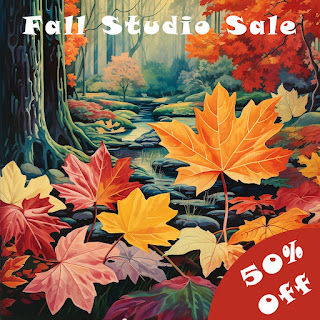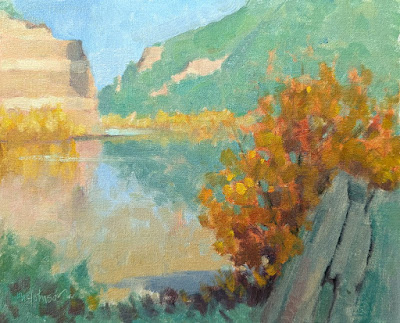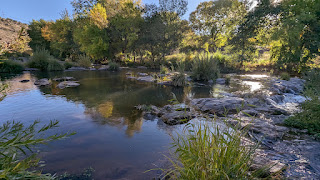Reflecting on the passing of another year has become somewhat of a cliché, but I'll indulge in it nonetheless: It's remarkable how swiftly time flies. But rather than dwelling on the past, I find solace in embracing the belief that life is best lived looking forward, with only the occasional glance in the rearview mirror.
As we stand at the threshold of 2024, the future holds both anticipation and excitement. Here's a glimpse into what the upcoming year will offer:
Winter: Paintings of Scotland, and Hoping to Get Broadband!
My winter endeavor is dedicated to crafting a series of large paintings capturing the essence of Scotland, destined for an upcoming book. (See below.) Drawing inspiration from color sketches and photographs from previous trips, this series aims to explore inventive expressions of color and abstraction. And as for broadband, the prospect of it reaching our rural community soon will open doors to longer YouTube videos and the possibility of hosting Zoom workshops.
April: Sedona Plein Air Painting Retreat?
In the spirit of continuous exploration, I'm considering a "Hiking to Sketch and Photograph" retreat in Sedona, Arizona. Set against the backdrop of enchanting Uptown Sedona, this retreat will center around daily hikes on uptown trails, catering to experienced outdoor painters with a penchant for adventure. April is the tentative timeframe, and if this resonates with you, let me know. General details on my retreats can be found here.
July/August: Maine Plein Air Painting Workshop & Plein Air Painting Retreat
Lubec, Maine, and Campobello Island, New Brunswick, remain my preferred summer painting havens. An all-level plein air painting workshop is slated for July 29-August 1, with openings still available. Following that, a plein air painting retreat from August 5-9 awaits, currently at full capacity but open for waiting list sign-ups. Click here for details on the workshop. Click here for details on the retreat.
September: Scotland Trip
Embarking on a four-week immersive journey through different regions of Scotland in September, my focus will be on hiking, painting and photography. While fellow painters expressed interest in joining, we're reserving this adventure just for Trina and me at this time.
October: Plein Air Painting Workshop at Palo Duro Canyon, Texas
Trace the footsteps of Georgia O'Keeffe at Palo Duro Canyon in a three-day plein air painting workshop sponsored by the Amarillo Art Institute. Details are forthcoming, but mark your calendars for October 17-19 for a painting experience in this mini-Grand Canyon. (I'll send out more details as they are finalized.)
November: Sedona Plein Air Painting Retreat?
A second "Hiking to Sketch and Photograph" retreat is in the works for mid-November, echoing the April proposal. The allure of Sedona in November promises stunning colors in the cottonwoods and sycamores. Again, if you're interested, please let me know.
Winter 2024/2024: The Scotland Book and Wee Paintings of Scotland
Post-Scotland trip, my focus turns to crafting Through a Painter's Brush: Scotland, a book akin to its predecessors, filled with essays, diary entries, and captivating images. To support this venture, my revamped Patreon page offers two support levels, each with its unique perks. (And yes, if you'd prefer not to deal with Patreon, you can pay in full, up-front.) As the snow shovel beckons in anticipation of a wet winter, I invite you to consider joining me on this artistic odyssey. Your support, whether through Patreon or direct engagement, is immensely appreciated. If you've already enlisted, my heartfelt thanks! Click here for details.
That concludes the current update—now, off to find that snow shovel! Winter's forecast promises precipitation, and I'm ready to embrace the artistic challenges it brings.
Wishing you all a productive and peaceful New Year!


















































